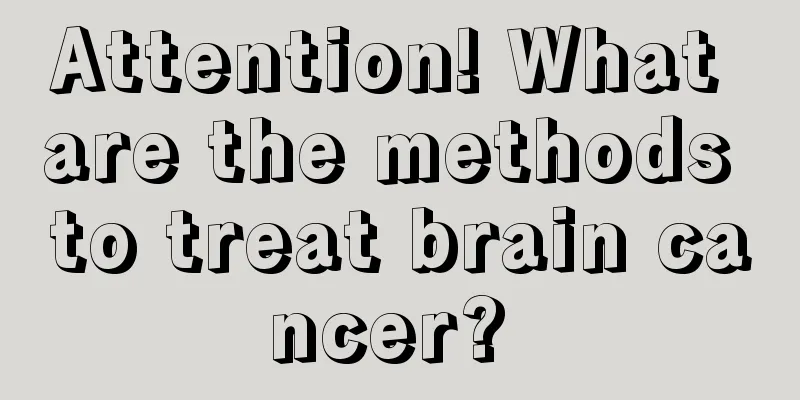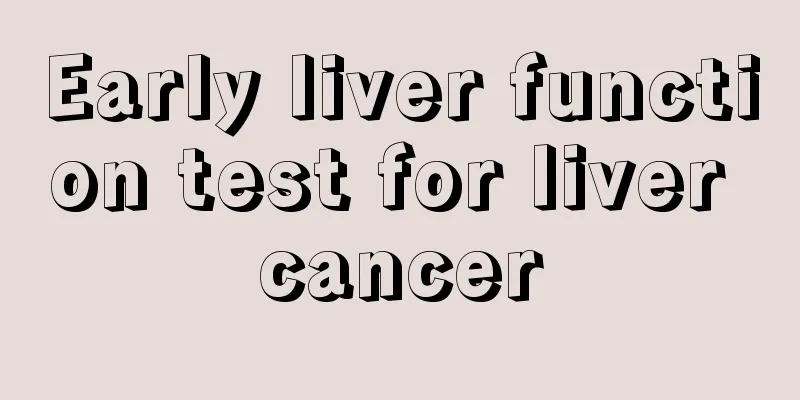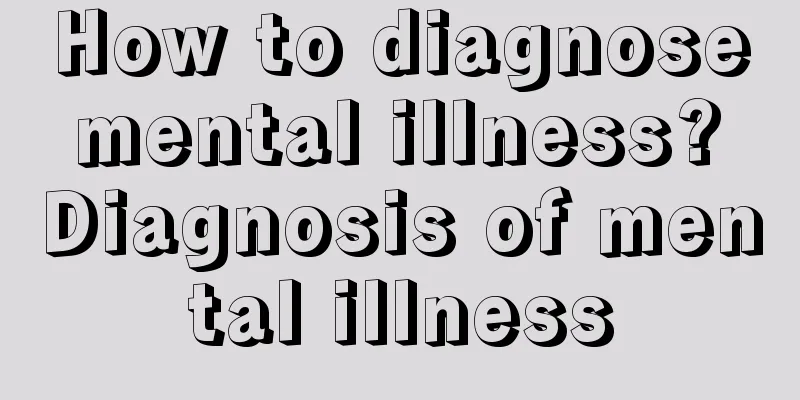Attention! What are the methods to treat brain cancer?

|
In recent years, brain cancer has become one of the major diseases that endangers society and human health, and it has brought great pain and distress to humans. In order to reduce the incidence of brain cancer, we humans should master the knowledge about the treatment of brain cancer. The following is a brief introduction to the relevant knowledge about the treatment of brain cancer: 1. Surgery For primary tumors, surgical resection is performed to remove tumor cells as completely as possible and avoid Resection of brain tumors is still the most common treatment mode. In surgical resection, studies have shown that the use of 5-aminolevulinic acid (5-ALA) to mark cancer cells and make them fluorescent can help improve the tumor resection rate. The product Gliolan (medac GmbH) has been approved for marketing in Europe. For some deeper tumors or tumors that cannot be removed by traditional surgery, stereotactic radiosurgery (Gamma knife, Cyberknife or Novalis Txradiosurgery) is also another surgical option. For benign tumors, the chance of complete surgical removal is higher, and the patient's survival rate is also higher. For example, cerebral or cerebellar astrocytoma, sella craniopharyngioma, ventricular choroid plexus tumor, etc., no radiation or chemotherapy is required, and the recurrence rate is low, but regular CT or MRI reexamination is required. Residual benign tumors that cannot be completely removed by surgery can be observed and tracked, or chemotherapy or radiation therapy can be used immediately. For common malignant brain tumors, such as degenerative astrocytoma, medulloblastoma, ependymoma, teratoma, etc., those that can be completely or nearly completely removed have a better prognosis, but radiotherapy and/or chemotherapy must be added to achieve the goal of controlling tumor growth. The survival rate of patients with primary brain tumors is significantly related to the type of tumor and the patient's age and physiological function, which will affect the patient's choice of treatment mode. 2. Chemotherapy Currently, chemotherapy for cancer has made great progress. However, due to the special structure of the blood-brain barrier (BBB) in the brain, chemotherapy for brain tumors is still subject to many limitations. Any chemotherapy drug can only pass through the vascular endothelial cells through the lipid solubility of the drug, and then enter the tumor cells to take effect. This pattern affects the speed and efficiency of the drug's action. Currently, the chemotherapy drugs commonly used in clinical practice are the nitrosourea alkylating agents BCNU and CCNU, or the PVC regimen (methylbenzylhydrazine + vincristine + CCNU), which have certain therapeutic effects but have side effects such as delayed and cumulative bone marrow suppression and pulmonary toxicity, and are prone to drug resistance. There has been new progress in the development of new chemotherapy drugs for the treatment of brain tumors. One is the oral drug "Temozolomide", and the other is the drug chip "Gliadel (BCNU)" that is directly implanted during surgery. ?Temozolomide (Schering-Plough) Temozolomide is an alkylating anti-tumor drug containing an imidazotetrazine ring with anti-tumor activity. It is inactive by itself and is a prodrug. It must be converted into the active compound MITC (5-(3-methyltriazene-1-yl) imidazole-4-amide) through a non-enzymatic pathway at physiological pH, and the latter is further hydrolyzed into active metabolites to show anti-tumor activity. In theory, the anti-tumor activity of MTIC is mainly through the primary alkylation with the sixth oxygen atom of guanine, and also secondary additional alkylation with the seventh nitrogen atom of guanine. Therefore, the subsequent cytotoxicity is believed to be related to these abnormally repaired methyl compounds. Temozolomide is administered orally and can be used as an adjuvant therapy simultaneously with radiotherapy. It can be used to treat newly diagnosed glioblastoma multiforme or recurrent malignant glioma. During treatment, the number of neutrophils and platelets during chemotherapy must be closely monitored to avoid side effects of blood toxicity. ?Gliadel (Baibo Pharmaceuticals, USA) In 1996, the U.S. FDA approved Guilford's application for the use of Gliadel, an implantable drug chip with BCNU as the active ingredient and polyphenylpropanol 20 as the release matrix, to treat recurrent malignant brain tumors. After surgery, the drug can be placed directly in the brain tissue of recurrent malignant gliomas to allow the drug to be slowly released for continuous chemotherapy. After years of multi-center clinical trials, the FDA expanded its treatment indications in 2003 and approved Gliadel for the treatment of primary malignant brain tumors. According to literature reports, Gliadel can prolong the intermediate survival of patients with primary and recurrent malignant brain tumors. The uniqueness of this treatment method lies in its drug delivery method and release system. During the surgical procedure, the tumor tissue is first removed, leaving a small cavity, and then the regularly released chip is implanted. These chips will slowly decompose and melt within 2 to 3 weeks, and the released drugs can directly enter the tumor area, killing those tumor cells that were not completely removed during the surgery, and can achieve effective blood drug concentration in the lesion without damaging other tissues, delaying the progression of the disease. The National Comprehensive Cancer Network (NCCN)'s latest treatment principles for malignant brain tumors point out that patients with primary and recurrent malignant brain tumors can have Gliadel (BCNU) implanted at the same time as the tumor is surgically removed, followed by radiation therapy or chemotherapy drugs such as Temozolomide. According to literature reports, this treatment model can effectively prolong the patient's median survival. 3. Radiation therapy Radiation therapy uses radiation or gamma rays or high-speed neutron rays to kill tumor cells. Brain cancer lesion diagram referred to as radiotherapy. Radiation therapy is the most common adjuvant treatment for tumors, and is usually started 1 to 2 weeks after surgery. Radiation therapy mainly uses the fact that tumor cells are sensitive to radiation and are easily damaged by radiation to kill tumor cells. Generally, the treatment takes about four to eight weeks, and the size of the irradiation range and the dose are determined based on the different tumor pathological diagnoses, degree of differentiation, and imaging medical examination results. Radiation therapy is an effective method for many malignant tumors and deep benign tumors that cannot be safely removed. Currently, radiation therapy has developed into a form-dependent or positioning method, including linear accelerator radiation therapy, gamma-ray positioning radiosurgery, photon knife, etc. However, some malignant brain tumors still require large-scale brain radiation therapy or whole-skull and spine radiation therapy. A study published by Texas Anderson Cancer Center in 2008 pointed out that patients who undergo stereotactic radiosurgery (SRS) and whole brain radiation therapy (WBRT) have greater side effects and risks of damage to their learning and memory. The above is the treatment method of brain cancer. In short, once diagnosed with brain cancer, you must have the courage to face the reality, maintain a good mental health, and actively cooperate with the doctor's treatment. At the same time, you should understand the necessary daily health care and preventive measures to avoid complications. It is recommended that patients and their families keep in touch with experts in this field and consult regularly to get the best health care. Brain cancer http://www..com.cn/zhongliu/na/ |
<<: What are the early symptoms of brain cancer?
>>: How should I maintain my health after brain cancer surgery?
Recommend
Does Pu'er tea reduce internal heat?
Pu'er tea is a specialty tea of Yunnan, and...
What are the effects and functions of bitter melon facial mask
Beauty and skin care is something we may all do i...
Why does it take a hundred days to heal a broken bone
Perhaps everyone has heard the saying that it tak...
How to judge whether it is bone or tooth
A protruding mouth has a huge impact on a person&...
It turns out that this is the cause of urethral pain
Many people feel pain when they go to the toilet....
Skin care products for combination skin
Every woman cherishes her skin very much, so they...
What are the specific factors that cause ovarian tumors?
The occurrence of ovarian tumors is closely relat...
How to reduce broad shoulders and thick arms to make you smaller
Many women have some flaws in their bodies, the m...
The difference between lymphoma and skin cancer
In our lives, there are many diseases around us. ...
What are the surgical treatments for lung cancer? Introduction to 4 surgical treatments for lung cancer
In clinical practice, lung cancer is mainly treat...
Features of outdoor quick-drying pants
Outdoor quick-drying pants refer to a type of pan...
The skin on the elbow is rough and black
When we take a shower, we usually rub our whole b...
What foods are rich in capsaicin
In fact, capsaicin can have the effect of reducin...
Mulberry leaves prevent hair loss
The anti-hair loss effect of mulberry leaves has ...
Can potatoes help remove dark circles?
The problem of dark circles under the eyes can be...









